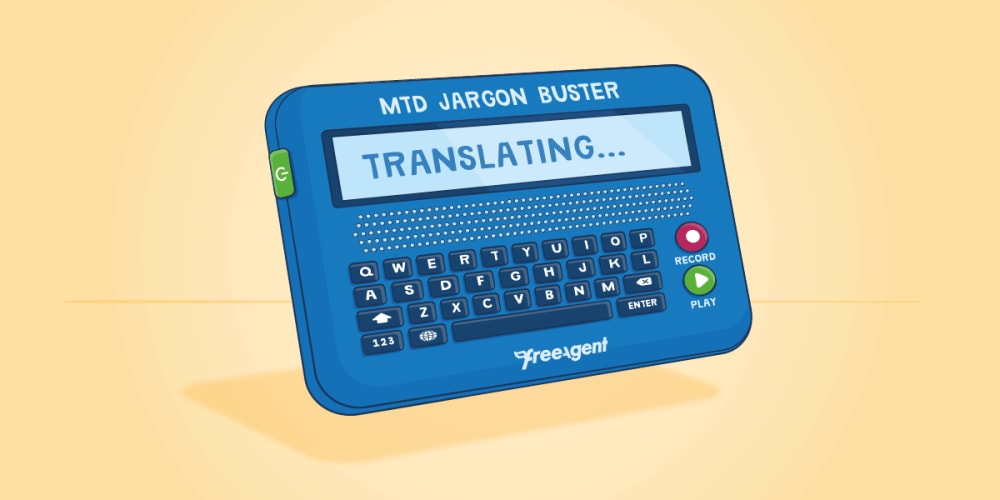Need-to-know MTD for Income Tax terms to share with your clients

Making Tax Digital for Income Tax is drawing ever nearer, and with it comes new terminology that you may want to introduce to your clients. To help you demystify the jargon and get your clients ready for the initiative, we’ve put together this handy glossary of MTD for Income Tax terms. From defining an annual summary to clarifying the final declaration journey, informing your clients about MTD for Income Tax and introducing them to the lingo will be a breeze.
Accounting software
Anyone who falls within the scope of MTD for Income Tax will have to use MTD for Income Tax-compatible software to keep their financial records digitally. This will include desktop software packages, cloud accounting software like FreeAgent or spreadsheets combined with specialist bridging software. To ensure that a business’s tax liabilities are compliant with the new legislation, it’s necessary to use HMRC-recognised accounting software.
Agent authorisation
Business owners can authorise someone else to deal with HMRC for them, such as an accountant, friend or relative.
Although it’s possible to sign a client up for MTD for Income Tax, you will be unable to work on their account until you have been authorised to do so. Once a client is signed up for MTD for Income Tax via the HMRC website, they’ll receive an authorisation email. They’ll then need to follow the link in the email and complete the authorisation steps to enable you to act on their behalf.
Annual summary
An annual summary is a set of summary data for a tax year and contains all of the business’s allowances and adjustments, broken down by category.
Quarterly updates
A summary of business income and expenses should be sent to HMRC every three months using MTD-compatible software. The deadlines for submitting quarterly updates will be the same for everyone who has to follow the MTD for Income Tax rules. From the start of the tax year on 6th April 2026, these deadlines are:
- 7th August
- 7th November
- 7th February
- 7th May
Final declaration
Final declaration is the term used by HMRC to describe the process a taxpayer goes through to finalise their end-of-year position for Income Tax.
The final declaration process will be introduced in April 2026 as part of the MTD for Income Tax initiative. This will replace the annual Self Assessment tax return for many taxpayers, and require those affected to keep their records digitally and file updates through accounting software.
Before starting the final declaration process, the taxpayer will need to ensure that their accounting software is up to date with their entire income for the year (including interest on savings and dividend payments) and any relevant additional information.
The final declaration process will then allow the taxpayer to finalise their tax position for the year and calculate their final Income Tax liability. The final declaration must be made by 31st January following the end of the relevant tax year.
Obligations
An obligation, also known as an obligation period, is a period of time in which a client has to provide summary income and expense data for their business. Every business has multiple obligations (one every quarter) and the dates for these are set by HMRC based on the accounting period of the business.
Update period
An update period is a period of time within an obligation. An update period can vary in length from a single day to the whole obligation but cannot run across more than one obligation. Clients can submit a summarised version of their income and expense data for these update periods and this can be provided as a single update or as several small updates.
Looking for a jargon-free solution for your landlord clients? Discover how landlords can use FreeAgent to manage multiple properties, track the profitability of each property and keep an eye on their business spending without an accounting translator!
Originally published
Last updated


